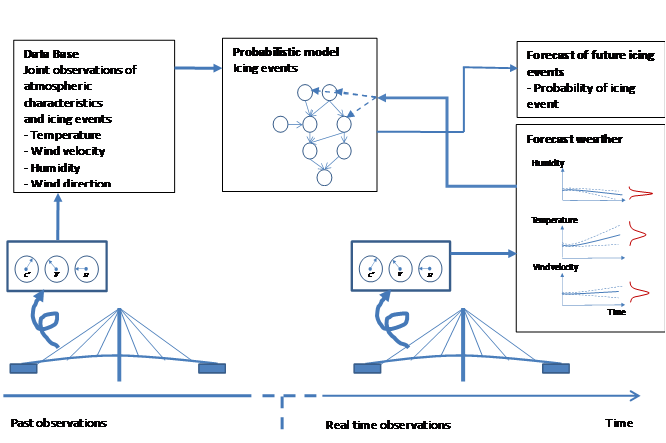How to put a value on structural health monitoring (SHM) strategies even before they have been implemented? This is a highly relevant but also a rather challenging problem since nobody is capable to guess precisely what the monitoring strategies will bring in terms of new information. In fact, the valuation of yet unknown information is not only of interest in the area of SHM but is completely generic in the context of supporting decision-making in the face of uncertainty - in any societal context. Driven by the practical relevance of this class of problems, already more than 50 years ago the so-called Value of Information (VoI) analysis was formulated within Bayesian decision theory as a special case of the pre-posterior decision analysis.

The VoI analysis has now proven its merits also in the field of structural integrity management - greatly facilitating optimisation of SHM strategies. To reach this point was indeed one of the main outcomes of the joint efforts of trans-European and international efforts concerted within the COST Action TU1402.
Before the initiation of COST Action TU1402 is was well appreciated that the VoI analysis in the context of SHM has great potential – however, it was also understood that major gaps of knowledge hindered the wider utilization of VoI and the unleash of it potentials in the context of structural integrity management.
First of all, it was clear that SHM experts and structural engineers had only little if any knowledge about VoI and needed special training to appreciate the concept of VoI and the benefits that this approach could provide in the context of SHM. Another major challenge was related to the development of frameworks and methodologies required to join the fields of structural engineering and structural health monitoring under the umbrella of Bayesian decision analysis.

The team of Working Group 1 of COST Action TU 1402 has worked on helping to resolve these challenges. In particular, the team participated in the organisation of the Training Schools on the VoI analysis and its application in SHM for professionals and young researchers working in the field of SHM and structural integrity management. The team was also involved in collecting, assessing and recompiling the mathematical framework of the VoI analysis to facilitate its targeted and efficient use for optimising SHM strategies. In addition, the Working Group 1 examined and described how the performances of SHM techniques can be modelled, quantified and documented to allow for an assessment of the value they provide for structural integrity management. Results produced by Working Group 1 were utilized across all the Working Groups of the Action – and the end results are best appreciated from the case studies carried out and documented by Working Group 4.
Pre-posterior analysis: estimating before measuring
The picture of the Øresund bridge was taken by Guillaume Baviere and is licensed under Creative Commons Attribution-ShareAlike 2.0 Generic.